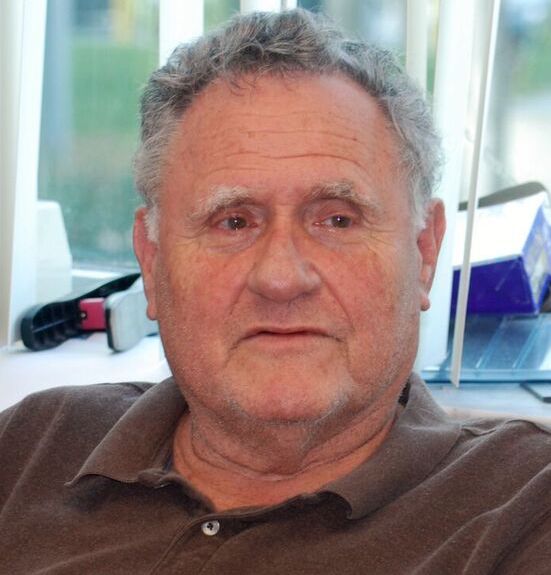Howard Hock

Education
BSEE Polytechnic Institute of Brooklyn, 1962
MSEE New York University, 1967
PhD Johns Hopkins University, 1971
Research Interests
The main focus of my research laboratory is on the perception of motion. This entails the identification of mechanisms responsible for the detection of motion as well as the neural interactions among local motion detectors that result in the formation of global motion patterns. Our experimental work, which is informed by current knowledge of visual neurophysiology, involves psychophysical studies with adult, human observers. It is generally concerned with how stable motion percepts are formed and how they evolve in time through changes in stimulation, adaptation, and effects of random fluctuations. Nonlinear dynamics, which constitutes the unifying theoretical framework for these studies, is the basis for the computational models through which we simulate our experimental results. Current projects are aimed at distinguishing the neural pathway for the processing of object motion and shape from the neural pathway for the processing of objectless motion energy, studying how the pathways interact in discriminating between the optic flow generated by the perceiver's egomotion from the actual movement of individual objects, and developing new experimental techniques for determining the perceptual organization of objects composed of multiple surfaces. Finally, we are engaged in computational projects that introduce dynamical concepts into motion detection models (in particular the transition from stationarity to motion), investigate the role of feedback in global motion pattern formation, and determine the neural pathways that are responsible for the conscious awareness of visual stimuli.
Research Descriptions
Recent Publications
Gilroy, L. & Hock, H.S. (2009). Simultaneity and sequence in the perception of apparent motion. Attention, Perception & Psychophysics (formerly Perception & Psychophysics), 71, 1563-1575. Hock, H.S., Schöner, G., & Gilroy, L. (2009). A counterchange mechanism for the perception of motion. Acta Psychologica, 132, 1-21. Hock, H.S., & Nichols, D.F. (2010). The line motion illusion: The detection of counterchanging edge and surface contrast. Journal of Experimental Psychology: Human Perception and Performance, 36, 781-796.Hock, H.S., & Schöner, G. (2010). Measuring perceptual hysteresis with the modified method of limits: Dynamics at the threshold. Seeing and Perceiving (formerly Spatial Vision), 23, 173-195. . Re-published in: J.A. Solomon (Ed.), Fechner’s Legacy in Psychology: 150 years of Elementary Psychophysics (pp.63-86). Leiden: Brill.
Hock, H.S., & Schöner, G. (2010). A neural basis for perceptual dynamics. Jirsa & R. Huys (Eds.), n onlinear dynamics in human behavior (pp.151-177). Berlin: Springer Verlag .
Azzopardi, P., & Hock, H.S. (2011). Illusory motion perception in blindsight. Proceedings of the National Academy of Sciences, 108, 876-881. Hock,H.S., Schöner, G., Brownlow S., & Taler, D. (2011). The temporal dynamics of global-to-local feedback in the formation of hierarchical motion patterns: Psychophysics and computational simulations. Attention, Perception & Psychophysics. 73, 1171-1194. Daniels, L.B., Nichols, D.F., Seifert, M.S., &
Hock, H.S. (2012).Changes in pupil diameter entrained by cortically initiated changes in attention. Visual Neuroscience, 29, 131-142. Hock, H.S. & Nichols, D.F. (2010). The line motion illusion: The detection of ounterchanging edge and surface contrast. Journal of Experimental Psychology: Human Perception and Performance, 36, 781-796. Hock, H.S. & Nichols, D.F. (2012). Motion perception Induced by dynamic grouping: A probe for the compositional structure of objects. Vision Research, 59, 45-63. Odic, D., Hock, H.S.,& Halberda, J. (in press). The effect of confidence hysteresis on approximate number discrimination in young children. Journal of Experimental Psychology: General
Hock, H.S. & Nichols, D.F. (2013). The perception of object vs. objectless motion. Attention, Perception & Psychophysics.
Norman, J., Hock, H.S., & Schöner, G. (2014). Contrasting accounts of direction and shape discrimination in short-range motion: Counterchange compared with motion energy detection. Attention, Perception & Psychophysics, 76, 1350-1370.
Seifert, M. & Hock, H.S. (2014). Independent detection of motion energy and counterchange: Flexibility in motion detection. Vision Research, 98, 61-71.
Pelah, A.., Barbur, J., Thurrell, A., & Hock, , H.S. (2014). The coupling of vision with locomotion in cortical blindness. Vision Research.
Hock, H.S. (2014). Dynamic grouping motion: A method for determining perceptual organization for objects with connected surfaces. The Handbook of Perceptual Organization. Editor: J. Wagemans.
Odic, D., Hock, H.S.,& Halberda, J. (2014). The effect of confidence hysteresis on approximate number discrimination in young children. Journal of Experimental Psychology: General, 143, 255-265.
Hock, H.S., & Schoner, G. (2016). Nonlinear dynamics in the perceptual grouping of connected surfaces. Vision Research (Special issue: Gestalt perception), 126, 80-96.
Rekauzke, S., Nortmann, N., Staadt, R., Hock, H.S., Schöner, G., & Jancke , D. (2016). Initiation of propagating V1 activity underlies asymmetry in dark-bright Processing. Journal of Neuroscience, 36, 1902-1913.